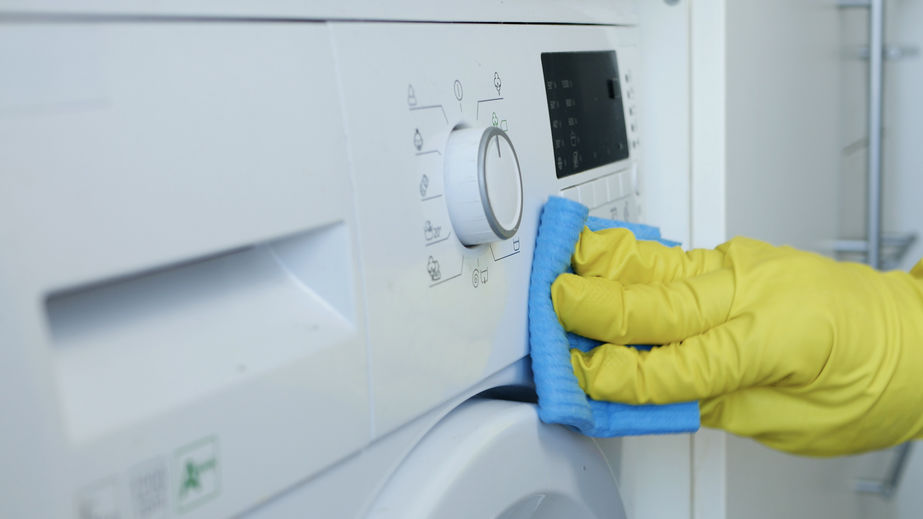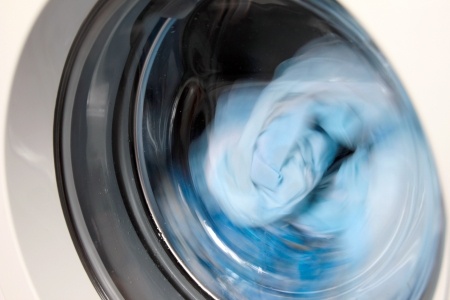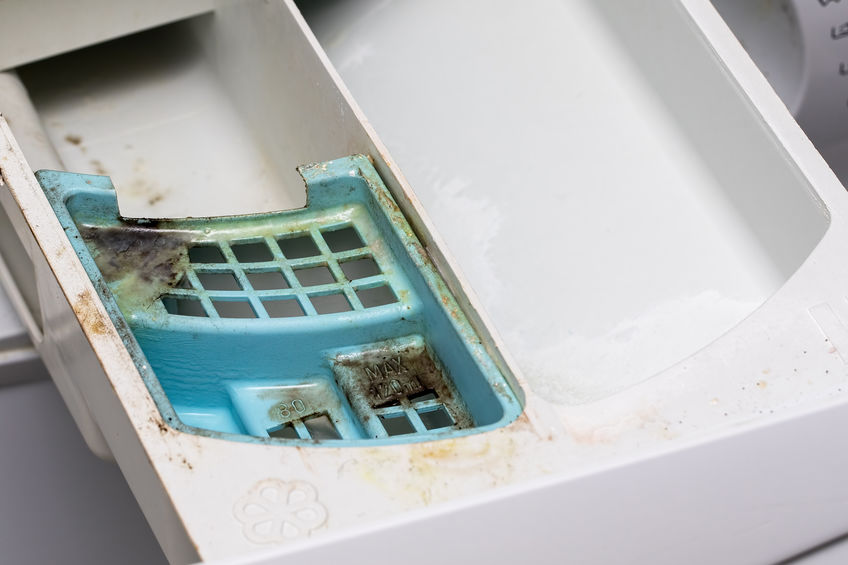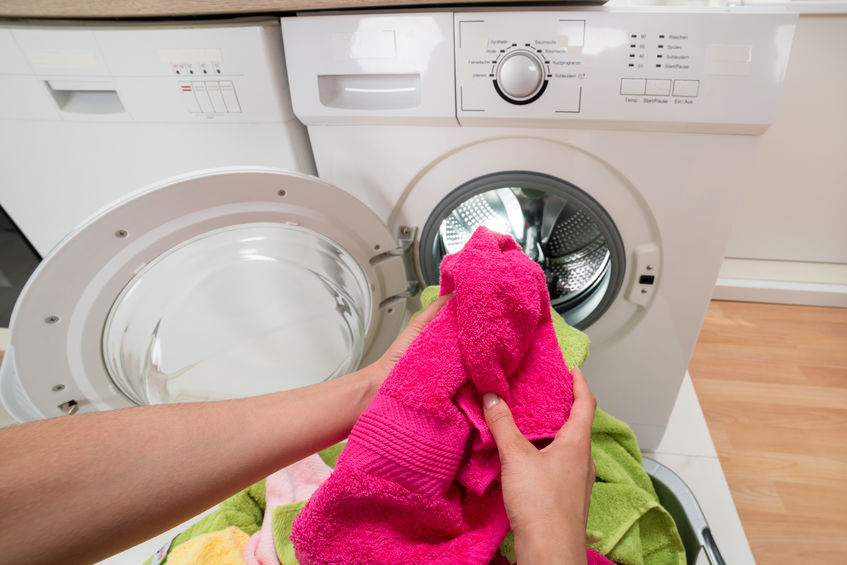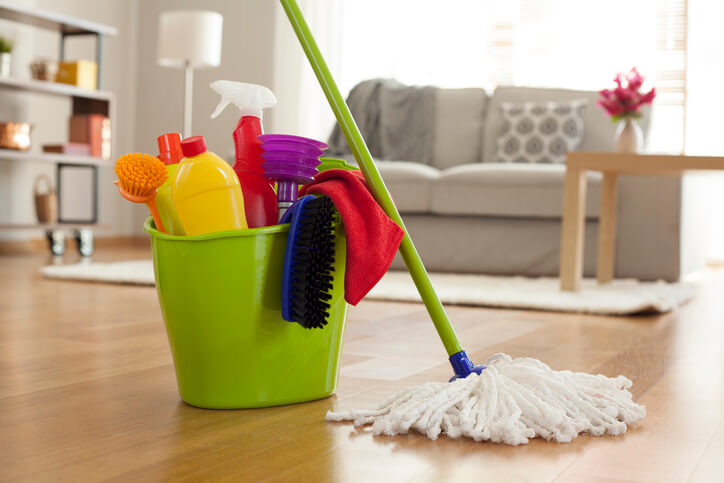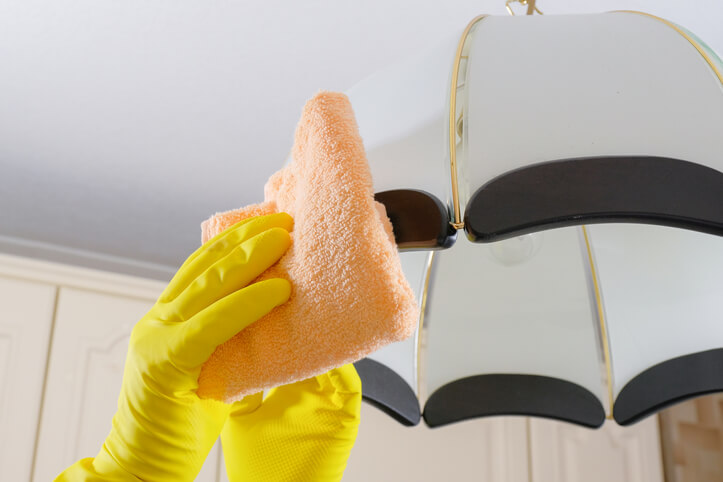Disinfecting Your Washer
and Dryer
Before you gather up those dirty duds and head to the laundry room, take a moment to sanitize the space. Disinfecting your washer and dryer is essential to maintaining your clothing investment and your family's health.
The condition of your washer and dryer plays a significant role in the cleanliness of your clothing. Here's how to sanitize your washing machine and dryer.
Disinfecting Your Washer and Dryer
Clean your washer weekly with an easy vinegar treatment. Then, use the heavier arsenal to disinfect your washing machine monthly—or at least semi-annually—to kill germs that may have taken up residence there.
If a virus cycles through your home, jump in with some ASAP disinfection.
The Cleaning Routine for Disinfecting Washers and Dryers
To control germs in your washer, run a complete cycle using hot water at the maximum fill setting once a week. After the machine fills, add two cups of distilled white vinegar.
Do not launder any clothing or add detergent during this cycle. Its purpose is to dissolve residue, kill the machine's germs, and drain.
Steps to Disinfecting Your Washer and Dryer
Disinfect your washer monthly or immediately after washing the clothes of someone who is sick. A surprising number of hardy germs can survive a warm-water swim.
You should also disinfect your washer and dryer after running a load of clothes contaminated with poison oak or poison ivy, pesticides, or petroleum chemicals.
Disinfecting is especially important if you regularly wash in cold water. Washing machines collect dirt, grime, and bacteria from your clothes, towels, and bedding.
If you only use cold water, the residual buildup of the laundry detergent and fabric softener can trap and hold germs and bacteria in a washing machine. These buggers can transfer back to your clothes, causing odor and potentially spreading disease.
Here's how to sanitize your washing machine using chlorine bleach.
- Set the washer's water temperature to hot. If your washing machine has a sanitizing cycle, use it. Otherwise, choose a heavy-duty or cotton setting.
- Add 1 cup of bleach to the washer drum (front-load and top-load models.) Do not add any clothes. Run a complete cycle.
- When the cycle is complete, check inside the washer, especially under the lid and rubber seals, for signs of mold or residual detergent. If you find any grime, scrub the area with a soft-bristled brush and a diluted bleach solution (e.g., four teaspoons of bleach added to 1 quart of water).
If you find any grime scrub the area with a soft-bristled brush and a diluted bleach (i.e., 4 teaspoons of bleach added to 1 quart of water).
Cleaning Washing Machine Drawers
Remove all dispensers (detergent, bleach, and fabric softener) and filters, and wash them in the sink in warm soapy water. Rinse, dry completely, and replace. Run another rinse cycle to ensure that all bleach is removed before doing a load of laundry.
Clean the exterior. Wipe the top, front, and side clean with a solution of chlorine bleach and hot water. Don't forget any knobs. Rinse and dry with a soft cloth.
Dryer Disinfecting Duty
To control germs in your dryer, clean the drum's inside with a disinfecting wipe or bleach solution weekly. Also, disinfect it after running a load of clothes contaminated with poison oak or poison ivy, pesticides, or petroleum chemicals.
Routine maintenance should include emptying the lint screen after each load.
But even if you consistently clear the lint screen, particles can accumulate at other places along the exhaust system - as fine as your lint screen is, some lint particles will still be finer.
One tip-off to a clogged vent is that your clothes don't dry in one cycle. Rather than risk a fire, plan to check the venting system every six months.
Be sure to wait until the dryer is cool to follow these disinfecting steps.
1. Remove the lint screen. Clear it of any lint buildup, and soak the filter in warm, soapy water in the sink.
2. Ready a cleaning solution. Add 4 teaspoons of chlorine bleach to 1 quart of water. Or use pine oil, phenolic disinfectant, or quaternary disinfectant following label instructions.3. Wipe the dryer drum. Dip a soft cloth into the cleaning solution. Wipe the dryer drum's surface, the rubber seals and gaskets, and the interior of the dryer door, using enough solution to make surfaces visibly wet. Let sit for at least 10 minutes.
4. Return to the lint screen. While your disinfectant solution is working on the dryer drum, return to your soaking lint screen. Rinse it, shake off excess moisture, and allow it to air dry.
5. Rinse the drum well with a cloth dipped in water. Then, wipe the drum dry with a clean cloth or allow it to air-dry.
6. Clean the exterior. Wipe down the outside of the dryer, including any knobs, handles, and the door with the cleaning solution. Use an electronics disinfecting wipe on any control panels. Let sit for at least 10 minutes. Rinse well with a cloth dipped in water. Allow it to air-dry or buff dry.
7. Replace the lint screen once dry.
Disinfecting your washer and dryer is complete.
- Clean Home
- Clean
- Disinfecting Washer and Dryer
